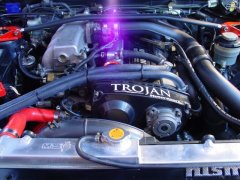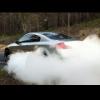What Tailshaft Are You Running
Announcements
-
Similar Content
-
Latest Posts
-
In a few years from now, you'll regret that. It'll eat away at you, knowing the truth of the ugly hiding beneath the beautiful exterior... 😛
-
By joshuaho96 · Posted
I don't think the G2 profile is particularly dangerous for the engine per se, more just are you actually ok with the turbo lag trade-offs? If the answer is yes then go for it. I personally don't think I'd be ok with it because I spend so much time at lower RPMs and I really enjoy the feeling of being able to stay in 5th gear on the highway and just roll into the throttle to get boost. Or staying in 3rd gear on "gentle canyon cruises" without feeling the turbo lag too badly. The 525 pump should be able to run flat out on factory lines but I would bet the pressure drop from pump to regulator is quite impressive. I don't know how much it would be exactly but I've seen figures like 30 psi thrown around. -
By Murray_Calavera · Posted
It's interesting seeing everyone talk about what level of risk they are happy to tolerate. Building a GTR always has a level of risk, you could be that lucky guy that drops 20k on the engine build alone and still has the thing go pop on the dyno. Life is fun like that. The way I see it, the thing is a toy to be enjoyed. I'd be happy to turn up the power on stock motor and limit the risk with sensible tuning and engine protection. If it still goes pop, it is what it is. The car isn't a daily driver so it can happily sit while a plan is made to sort it out. Given this thing will be a street car only, I really feel it's worth the (relatively small if managed well) risk to turn the power up to around 350KW on e85. I don't think anyone getting into the skyline game now is doing it out of logic. Surely it is a purely emotional decision so I'm not sure how important it is to think about the engine build logically. The heart wants what it wants. @joshuaho96 little note for Josh, I run my 525 pump flat out all the time and through the factory lines without any issues. (excluding the melting connectors, that's sorted now. we'll pretend it never happened lol) -
By joshuaho96 · Posted
But the Nexus S3 is very expensive and won't be as purpose-built for the application as a separate electronic boost controller :^) More seriously my pet issue here would be that the Walbro 525 running at 100% duty cycle is going to require more FPR than the stock setup can handle. I'm also pretty sure from what I've seen elsewhere you might want to slow down the pump regardless unless you're going to come up with some way of upsizing the fuel lines coming from the fuel tank. Factory 8mm fuel line doesn't actually flow very much if you want to keep pressure drop down between the fuel pump outlet and FPR. If you really want to "keep it simple" I would run only as much pump as you need and source a fuel pump controller to slow down the pump in the vain hope of being able to run stock-style FPRs which are pretty dinky. Or just use the HICAS lines and it should be mostly fine. OP should also really think hard about what profile they'd want out of the turbo. My pet choice here would be the G1 profile rather than anything higher power but YMMV. I already think ~stock turbo lag is pretty bad so I don't want to make it worse. In "gentle canyon cruising" I found that I spent a lot of time around 4-4.5k RPM. I also recommend DIYing labor if you're detail-oriented enough. Costs are high for labor + if you do it yourself you can be your own quality control. -
GTSBoy is again on the money. My actual advice? Sell the car. (really). For what it's worth as is, you can sidegrade into something much better. If you care about function then this is the actual move. If you want a Skyline to perform, set aside about $100K to do it. This is NOT a typo. You will see right away these are two very different mindsets. Realistically we're talking full restomod for any Skyline still kicking around. Have an honest think about which one you are.. and what you want to do, and how much you want to invest in this (with no return).
-







Recommended Posts
Create an account or sign in to comment
You need to be a member in order to leave a comment
Create an account
Sign up for a new account in our community. It's easy!
Register a new accountSign in
Already have an account? Sign in here.
Sign In Now